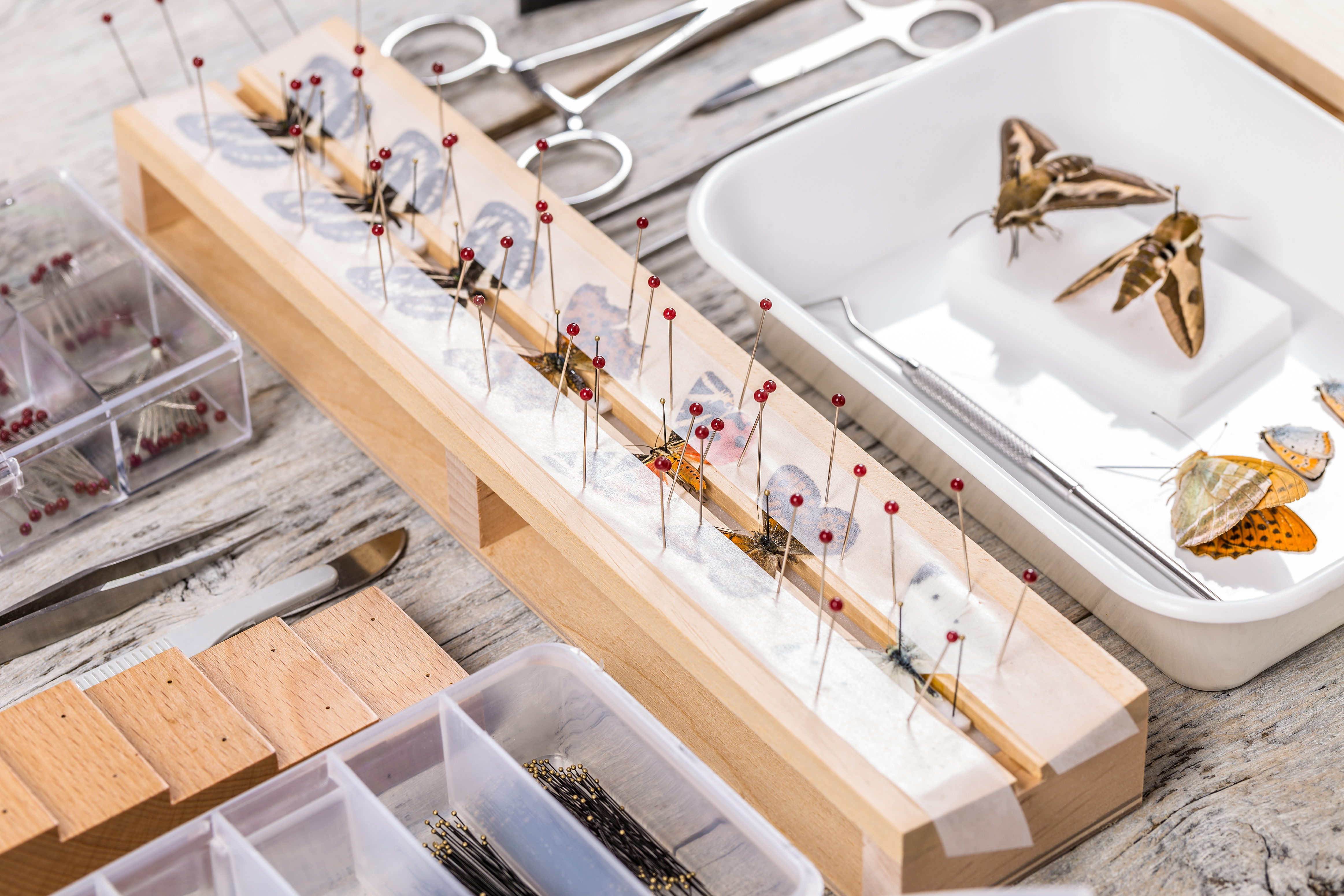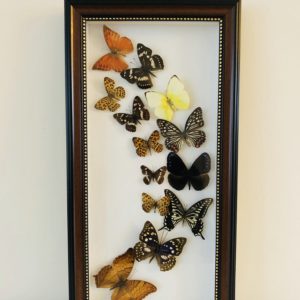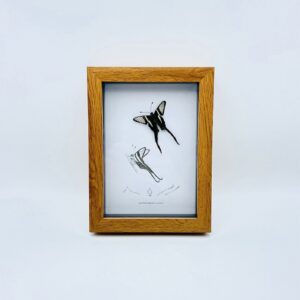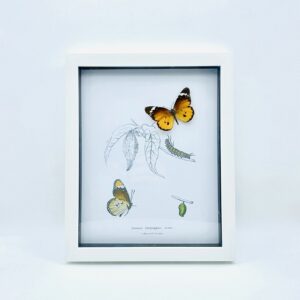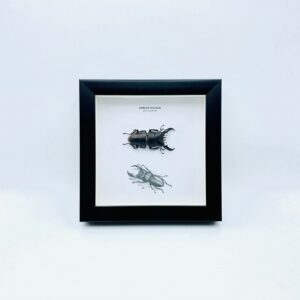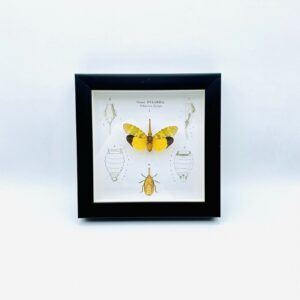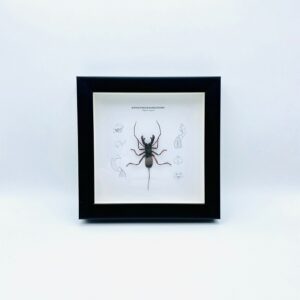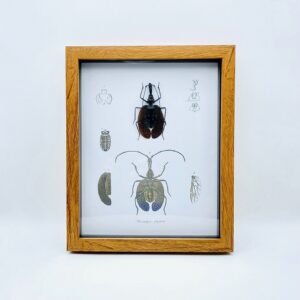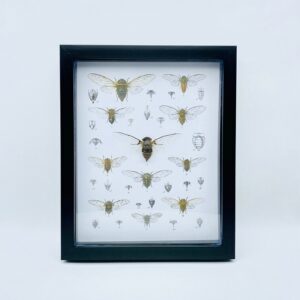What is taxidermy?
In the general sense, taxidermy is considered as a set of mechanical, chemical and biological processes for the long-term conservation of living beings (mammals, birds, fish, insects, spiders, etc.) as a whole body or a specific part of the body. Taxidermy is both an art and a trade. On the one hand, with taxidermy, the craftsman expresses his artistic mind by showing his work in the most natural way possible, and on the other hand, he expresses his love for science by making his work accessible to all interested generations in order to satisfy their curiosity. In a more specific sense, taxidermy is the preservation of larger animals such as mammals, birds, fishes, and reptiles of etc., while the preservation of arthropods (insects, spiders, crabs etc.) is called pinning and mounting.
For what is taxidermy used?
Taxidermy i.e. preserved examples can have private or public benefits. The preparation of prey (wild boar, deer, bear, etc.) often falls into the private category. Caught by the hunter, the examples are serving as trophies and memories of the interesting, painstaking and extraordinary part of the hunting-experience. Private benefits can also be seen during the collection of butterflies and other insects for a private collection. Preserved examples exhibited in natural museums, colleges, colleges, etc., serve in the public interest, usually for researching extinct, vulnerable or very distant species. In this way, significant scientific facts become available to a much greater audience, which, on the other hand, increases awareness about nature and the need for its adequate protection and revitalization.
What are the basic step in taxidermy?
Depending on the type of animal and the purpose of the taxidermy, there are a number of different taxidermy methods. In general, taxidermy can be reduced to four simple procedures: preparation, preservation, mounting and specimen management.
- Preparation of the animal:
The first step is the humane killing of the animal in the most painless and quickest way possible. Humane killing of animals is in most countries even regulated and mandatory by law.
Then, cooling the body (freezing) in case the body can not be processed immediately. By freezing the body, we are slowing down a number of chemical and biological processes that are causing tissue degradation. The more degradation has progressed, the more likely the body will become unusable for the preservation.
Then, we begin measuring the size and shape of the body of the individual. This procedure may be one of the most important in order to buy or make a mold of the appropriate size.
The last part of the preparation is the meticulous separation of the skin from unnecessary parts of the body. During the separation of the skin, it is very important to remove all the fat and muscle tissue from the skin. Otherwise, there will be no adequate preservation of the skin, and consequently degradation of the specimen over time may occur. For anatomical reasons, the skin of fishes, birds and reptiles is not removed from the skull (only the eyes, brain, and tongue are removed).
- Preservation of the animal:
Preservation of the animal begins with dehydration of the body (if necessary), and most often by using a moderate amount of salt. In the event that too much water is removed, the skin becomes stiff i.e. it is no longer possible to mount the example on the mold.
The next step is the disinfection of the body (if necessary) by using most often a mixture of distilled water, salt and disinfectant. This method eliminates microorganisms that are causing the degradation process.
The last step is an additional chemical treatment of the body (lubrication of the skin with special oil to soften the skin and/or use of formic acid to bleach skeletal parts of the body).
- Mounting of the animal:
Before we start with the mounting process, we need to choose or make an adequate mold i.e. skeleton for mounting. In the majority of cases, beginners are encouraged to purchase ready-made molds until they have significant anatomy knowledge and practical experience in making their own molds.
Then, we start with fixing the body or part of the body on the mold. During the mounting process, the most important thing is to avoid too much tension of the skin. During this phase, attention should be paid to any potential damage to the skin and its stiffness. All accumulated mistakes should be used as an example and therefore learn from them, so that the next taxidermy project is much easier and much better quality.
- Maintenance of the animal:
We need to keep in mind that dust collection on the example may result in moisture accumulation and therefore can cause rotting of the example. Additionally, it is necessary to place the specimen out of the influence of large or low humidity and direct sunlight. A large number of organic and inorganic substances are decomposed under the influence of UV rays from the sunlight. By doing so, UV radiation can cause undesirable degradation of the exposit. Overall, under maintenance we mean: regular dust removal, regulation of the microclimate and regular stability check of the mold.
How to taxidermy insects?
The preferred name for insect (and arthropods in general) taxidermy is pinning, mounting or preserving. Due to their small size and the anatomy characteristic of arthropod, their preservation is different and much simpler. Namely, arthropods have an exterior skeleton (exoskeleton), and therefore the entire preservation process is reflected in the preservation of an extremely resistant part of their body. With arthropods with soft a body (caterpillars, larvae, spiders, etc.), the preservation is done by immersing their entire body in high-concentrated alcohol (disinfectant). Overall, each process has three procedures: killing the specimen, mounting the specimen (submerging) and marking the specimen. The marking of an individual specimen contains the name of the species, the name of the location where the individual was found, the date when the individual is collected and the name of the collector. While the marking process for private collectors is of less importance, it is of paramount in scientific research. In nature, the individuals that are already dead are in the most common cases already damaged and thus have a small collection (scientific) value, thus collectors and researchers usually capture live individuals. These captured individuals are killed by placing them in a closed vessel with an alcohol soaked cotton wrap (killing jar) in it or placing them in a freezer for several hours.
How to preserve butterflies?
One important problem arises when preserving a butterfly. Namely, on the one hand, their wings are covered with highly sensitive pigmented flakes, while on the other hand their pigmentation is of exceptional significance for the determination of the species as well as for the appearance of the butterfly collection itself. Therefore, during the entire pining process, we must be extremely gentle and precise. The killed individual is first placed on a flat surface (e.g. styrofoam) and his wings are spread out. Then, over each wing, a paper tape is gently placed and fixed with entomological needles. Then we pin a entomological needle through the thorax. In this position, the specimen is left for a few days, while the position of the wings becomes permanent. After that, the papers used for fixing the wings are removed, and the butterfly with now flattened wings can be fixed on the desired surface.
How to preserve spiders?
When preserving spiders, as with other soft body specimens, pinning becomes inadequate. Namely, because of the differences in the composition of the exoskeleton (it’s more elastic and therefore less robust), by pinning the body, the body begins to deform. Of course, such a physical condition of the specimen has a very small to no collection and scientific value at all. This problem is solved by immersing individuals in jar full with medical alcohol. This is the cheapest and easiest way of preserving, but it brings with it another problem. Namely, over the course of many years (sometimes decades), due to the strong reactivity of alcohol, changes in their pigmentation and size (reduction) becomes apparent. Some collectors, in order to avoid this problem, preserve the individuals with freeze-drying.
How to preserve beetles and other arthropods?
In other arthropods, pinning is done by fixing their extremities in the desired (usually in their natural) position with entomological needles. Then one entomological needle is pierces through the right middle of the thorax. After a few days, entomological needles around the extremities are removed because they are now no longer necessary, i.e., the exoskeleton is now in its permanent position.
Smaller arthropods i.e. flies are not pinned directly. Namely, due to the potential exercise of great pressure on the individual specimen during the manipulation (by penetration the entomological needle) there is a great risk of damaging the specimen. This problem collectors avoids by gluing the individual from the bottom side to a paper triangle, where the paper triangle is then fixed with an entomological needle on the desired surface.
References:
https://en.wikipedia.org/wiki/Taxidermy
https://en.wikipedia.org/wiki/Taxidermy_art_and_science
http://taxidermylifestyle.com/all-the-different-types-of-taxidermy/
http://taxidermylifestyle.com/what-is-taxidermy/
https://bughunter.tamu.edu/collecting-and-preserving-butterflies/
https://www.homesciencetools.com/content/reference/IN-INSEPIN.pdf
https://www.wikihow.com/Preserve-Insects
https://www.quora.com/How-is-taxidermy-done-in-insects
https://learning-center.homesciencetools.com/article/make-a-butterfly-collection/
https://sciencing.com/kill-butterflies-collection-8116968.html

